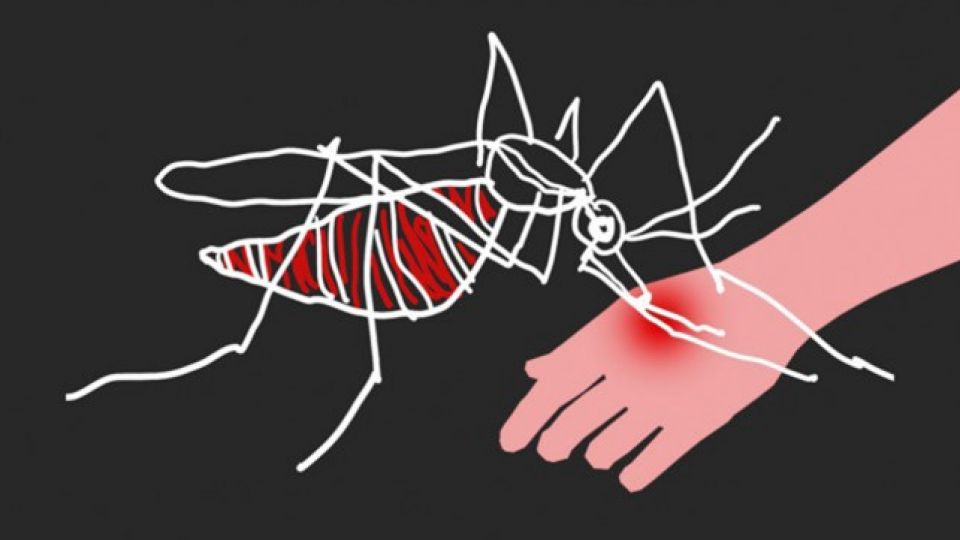August 27, 2019
Scientists expect warming temperatures will lead to worse dengue outbreaks in places the disease already lurks, and outbreaks in brand new places.
Record-breaking dengue outbreaks around the region have scientists and medical professionals questioning just how much climate change is to blame for the spike in cases.
Experts in Bangladesh cite rising temperatures, between 27 and 32 degrees celsius—prime breeding conditions for Aedes aegypti, the mosquito that transmits dengue—as a compelling reason for this season’s severity.
“Climate change is a key reason for the rising prevalence of dengue in Bangladesh. Warmer and humid weather along with irregular rainfall helps Aedes mosquitoes breed and Dhaka is a perfect place for that,” MM Akhtaruzzaman, manager of the Directorate General of Health Services’ malaria and dengue programme, told The Daily Star.
In Cambodia, those involved in the fight against dengue are asking similar questions.
Dr. Ngeth Pises, the medical director of Angkor Hospital for Children in Cambodia, says a changing Cambodian climate seems to be at least one of the logical explanations for why the hospital is experiencing their worst year on record.
“There are a few factors that may be at the cause of the outbreak,” said Dr. Pises. “One of those is the rainy season. For this year, the rain started a bit early compared to the last year or the years before.”
In the past, dengue transmission in Cambodia typically doesn’t start up until April or May, but thanks to rains that began in January in parts of the country, Angkor Hospital has been dealing with dengue cases from the very beginning of the year.
This increased disease burden where dengue is already known to strike is only one of the affects of climate change forecasted in countries where dengue is already endemic.
Another challenge for these countries is the spread of dengue past where the disease has taken hold in the past. As warmer temperatures spread, so too will the breeding zones of these mosquitoes, broadening the area at risk.
Take Vietnam, for example. Sophie Yacoub, the head of the Dengue Research Group at the Oxford University Clinical Research Unit in Vietnam says that at the moment, the south of the country is equipped to handle dengue’s outbreak years since that’s where the virus has As the world warms up, Dengue could spread
“In the south, we know it’s coming,” Yacoub explained.
But the northern reaches of the country where dengue has been less common, Hanoi for example, are far less prepared.
“It’s the areas where dengue is emerging, like in the North that often struggle because they have wildly fluctuating rates of dengue” says Yacoub.
“In Hanoi you might see a couple hundred cases, and then suddenly you get 10,000.”
Research into climate change and its impact on mosquito-borne diseases is finding that dengue’s endemic regions aren’t the only places that should be bracing for the virus’s spread.
“The main concern with climate change are those border areas where there is sporadic transmission now, but it will make the environment more favorable in the future,” explained Yacoub, who has co-authored a review paper on global warming and insect-borne viruses.
What does that mean?
“They’re predicting a lot of Southern Europe will be susceptible and will have the potential for dengue outbreaks.”
And Southern Europe isn’t alone.
According to a study published earlier this year in Nature Microbiology that mapped the spread of Aedes aegypti mosquitoes according to 17 different climate change scenarios, by the year 2050 roughly half of the world will live in places where the mosquito breeds.
If you take into account the fact that the global population is expected to increase by 2 billion people in that time frame, it means many more people will be exposed to the diseases these mosquitoes carry—including dengue.
In the United States, for example, the Aedes aegypti is already endemic to the southern states. The model these researchers developed anticipates the species will spread and thrive as far north as Chicago. In China, the species will stretch northward to Shanghai.
The Aedes albopictus mosquito (also known as Asian Tiger) is a less common dengue transmitter, but can spread the virus. The international team of researchers behind the study found that this mosquito’s spread will be even more impressive.
By 2080, in this model, Asian Tiger mosquito will be found in 197 countries, with 20 of those countries experiencing the species for the very first time. The spread will include parts of Europe, as well as the United States.
The geography of the dengue virus has implications beyond the immediate toll on health systems. Geography, for example, has played a role in the past in terms of the resources—or lack thereof—that are allocated to researching, and developing therapies for the disease.
“Dengue is classified as a neglected disease because of the areas it has affected,” said Yacoub, “so the incentive for pharma to develop, specifically antivirals, for a disease they won’t get much return on, obviously plays a role.”
Perhaps these climate forecasts that show dengue waiting on the doorstep of the United States, Europe, and northern Asia will convince the global scientific and pharmaceutical industry that dengue research isn’t such a bad investment after all.


